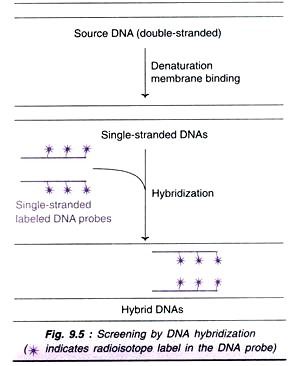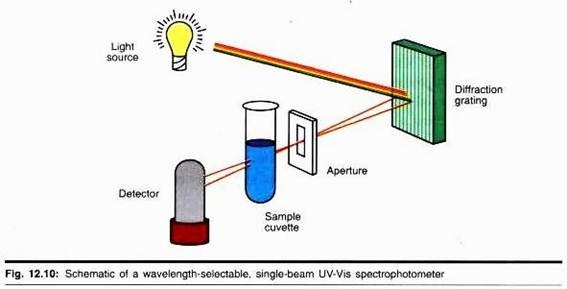ADVERTISEMENTS:
This article provides a brief overview of key points in cellular biology underlying prokaryotic-eukaryotic interactions.
1. Bacterial Ultra-Structure:
Bacteria are the smallest organisms living independently. Their size, shape and dimension vary.
2. Pathogenicity Islands:
Bacterial pathogenicity is governed by inter-species transfer of virulence factors contributed by plasmid and transposons. Pathogenicity is becoming apparent also. The interspersed elements (within the genomes of many pathogenic bacteria) are large distinct that encode virulence-associated genes.
ADVERTISEMENTS:
These chromosomal loci have been termed as pathogenicity islands (PAIs). This is the other important mechanism which contributes to evolution of microorganisms. Pathogenicity island has been nicely reviewed by Lee (1996) and Groisman and Ochman (1997).
Uropathogenic E. coli is the first bacterium in which PAIs were described. The α-haemolysin genes were described to be present on a large region of chromosome. They get lost spontaneously resulting in development of an a virulent strain.
Common features of PAIs are given in Table 27.5:
The E. coli haemosin-associated PAIs (PAI- I) are large (PAI-I is 70 kb and PAI-II is 190 kb) and carries genes encoding adherence-mediated P fimbrae (haemolysin and P fimbrae, PAI-II). They are found in pathogenic isolates but not in non-pathogenic isolates.
PAI-I and PAI-II contain short direct repeats of 16 kb and 18 kb, respectively. These chromosomal elements have a lower G-i-C content (41%) as compared to host bacterial chromosome (51%).
A second class of PAIs is the LEE (locus of enterocyte effacement; PAI-III) found in enteropathogenic E. coli strains. LEE is a 35 kb long chromosomal element that contains multiple genes providing a property of complex virulence. This property of LEE is the induction of attaching and effacing lesions on enterocytes. LEE encodes a Type III secretion system and several secreted proteins.
Type III secretion system which exports proteins directly to cell surface and directly delivers bacterial virulence proteins in cytoplasm of host cells. It is triggered by contact with host cell; therefore, referred to as ‘contact-dependent secretion’. LEE encoded molecules induce a chain signal transduction within enterocytes rearrangement of cytoskeletal and formation of pedestal. Bacterium sits on the pedestal.
LEE is stable and not flanked by direct repeats. It has distinct G+C (39%) as compared to that of E. coli chromosomes (51%). If LEE is introduced into a non-pathogenic strain of E. coli, the latter gets the property of single step acquisition for the attachment and effacement.
In addition to E. coli PAIs, certain chromosomal loci of other pathogenic bacteria demonstrated the features like PAIs. These features include the presence of large distinct chromosomal elements which differ in G+C contents, expression of defined virulence functions, un-stability in some loci, flanking of direct repeats (Table 27.6).
Table 27.6 : Pathogenicity islands of some bacteria.
Many of virulence-associated genes of pathogenic Salmonella species are encoded within pathogenicity islands. Four of such genes are known so far such as Salmonella pathogenicity (SPI- 1, SPI-2, SFI-3 and SPI-4).
ADVERTISEMENTS:
SPI-1 gene products induce apoptosis (programmed cell death) of Salmonella-infected macrophages, whereas SPI-2 has 45% G+C content and is required for survival of Salmonella macrophages. SPI-3 is essential for the growth of bacteria at low concentration of Mg++ and survival within macrophages.
The virulence of Vibrio cholerae is associated with the synthesis and secretion of cholera toxin encoded by cixA and cixB genes. These genes are carried by the filamentous bacteriophage CTXφ. The toxin co-regulated pilus (TCP) is the bacterial receptor for phage infection.
It acts as adherence determinant for the bacteria. The TCP gene is present on a 39.5 kb pathogenicity island which is termed as VPI. Acquisition of VPI gene of V. cholerae allows it to colonise the intestine of humans and animals.
ADVERTISEMENTS:
A cluster of virulence-associated genes encoded by 10 kb long chromosomal element is present in Listeria species pathogenic to humans and animals. These genes are absent in non-virulent pathogenic species. This locus lacks direct repeats.
Stable PAIs of Salmonella have been analysed and found that they were acquired early in the evolution of the genus Salmonella. The donor organism becomes neither extant nor recognised as the donor. Recent PAIs acquisition events and emerging pathogenic strains of both donor and recipient bacteria can be identified by molecular analysis combined with genome sequencing.
Large horizontally acquired chromosomal elements that encode discrete functions are wide spread among bacteria. The horizontal transmission of large chromosomal elements (500 kb) among soil bacteria has recently been described. The detailed mechanism of transfer, integration, retention, and regulation of PAIs are provided by the bacteria that receive the PAIs.
ADVERTISEMENTS:
For example, nodulation and nitrogen fixation genes are encoded by chromosomal elements which establish symbiotic association with roots of leguminous plants. In non-symbiotic mesorhizobia this ‘symbiotic island’ is transmissible through laboratory mating’s.
The element flanked by 17 bp direct repeats integrated into a tRNA gene. It encodes a bacteriophage-like integrase within its left end. Also it offers a marvelous opportunity to witness the evolution.





